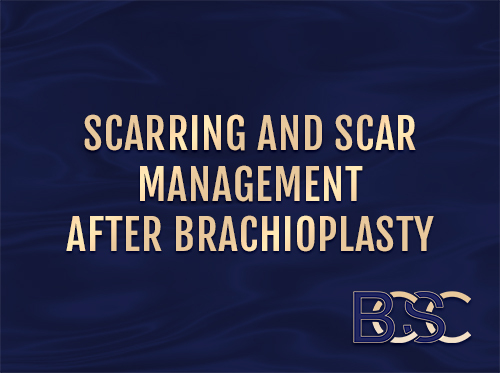Buttock Lift Surgery Guide
Many patients have a ** buttocks and thighs after weight loss. Once the skin has stretched due to weight gain, the skin appears loose and deflated after reaching a healthy weight. It is difficult to tighten skin that has stretched beyond its limit nonsurgically. Diet, exercise, and time rarely tighten skin as much as post-massive-weight loss patients desire. A buttock lift may be needed to tighten and lift the buttocks to a more ** position.
What is Buttock Lift Surgery?
A buttock lift (gluteoplasty) after weight loss is a surgical procedure that lifts and firms loose skin on the buttocks, outer, and inner thighs. A horizontal incision is placed on the lower back, just above the buttocks. The surgeon removes the excess skin. As the incision is sutured closed, it has a lifting effect on the buttocks and thighs. Liposuction (surgical fat reduction) may be performed on the thighs, buttocks, and waistline to **the results. After a gluteal lift, the buttocks look more lifted and taut with an **. Unless implants or fat grafting are performed, a traditional buttock lift only tightens and lifts the skin; It does not add volume.
A traditional buttock lift is designed to correct skin laxity on the:
- Buttocks
- Inner thighs
- Outer thighs
- Posterior waistline
What are the Benefits of Buttock Lift Surgery?
Benefits of the buttock lifting procedure (with liposuction) may include:
- Tighter skin on the buttocks and thighs
- A bum that looks more **
- A slimmer waistline
- More visibility of the gluteal musculature
- Reduction of saddlebags
- Better body proportions
- Clothes that fit better
- ** **
Who is a Candidate for Buttock Lift Surgery?
A traditional buttock lift is designed for post-weight loss patients who:
- Have loose skin on the buttocks and thighs after weight loss
- Find the extra skin cosmetically displeasing
- Have reached their weight loss goals
- Can maintain a stable weight long term
- Accept that the surgery has risks
- Are willing to have a surgical scar
- Are mentally and physically fit enough to have elective surgery
- Can take time off to recover
- Abstain from smoking
To learn if a buttocks lift is right for you, consult with a qualified surgeon. A body contouring surgeon or specialist general surgeon can help determine if a surgical butt lifting treatment will provide the results you are seeking.
What Happens During the Surgery?
A buttock lift is performed in a hospital while the patient is fully sedated with anaesthesia. An overnight hospital stay is usually not necessary, unless the buttock lift is performed as part of a belt lipectomy or other cosmetic surgical procedures. The surgery takes approximately two to three hours. Individual surgeons may use different techniques. Usually, the patient lies on their left side on the operating table. This provides access to the sides of the waist, outer thigh, and gluteal area. If liposuction is performed, the liposuction is done first. Once the liposuction is complete, a horizontal incision is placed along the iliac crest on the lower back. Through the incision, the surgeon removes the excess skin. The skin is pulled upward, and the incision is sutured closed. This tightens and lifts the buttock and thighs. One side is operated on at a time. Once the left side is completed, the patient is turned onto their right side and the process is repeated.
Recovery
The patient wakes in the recovery room. The area will be bandaged. Drains may be placed into the skin to remove fluid from the wound site. Water and a small snack (crackers or cookies) may be provided to reduce nausea after anaesthesia. Most patients can return home after spending about an hour in recovery. An adult must be present to drive the patient home.
The incision heals in approximately six weeks. The scar may feel lumpy or raised at first. It should flatten and fade with time. It can take a year or more for the scar to mature.
Swelling is pronounced after surgery. Much of the swelling dissipates in the first 12 weeks. A degree of swelling can persist for six months to a year. Every patient is different. Mild to moderate discomfort is normal after surgery. Prescription medications are provided to make the recovery easier. Bruising may also occur. Patients may be advised to sit or lie down only in certain positions for the first few weeks. Compression garments may be worn to reduce swelling after surgery.
A buttock lift is not considered major surgery. Most patients take at least one to two weeks off work to recover. The surgeon will advise the patient of how long it will take to resume driving, as this may vary based on the specific gluteoplasty procedure that was performed.
Risks and Complications
An excision-based gluteoplasty (without fat transfer) is considered ** for patients who are in good overall health. Fat grafting with BBL (Brazilian Butt Lift) may pose a slightly higher risk of complications. Some patients choose to have a buttock implant instead, although buttock prosthetics can sometimes be problematic. A traditional buttock lift after weight loss does not always involve adding volume to make the buttocks fuller. As a skin-reduction procedure, the risks are generally lower than BBL and buttock implant surgery. Regardless of the types of butt lift you choose, the most important step to protect your health is electing a qualified surgeon.
All surgery carries risks. Minor complications occur more frequently than serious ones. Possible complications may include:
- Infection
- Necrotic skin
- Blood clots, which can be fatal
- Keloids, permanently red, or raised scars
- Numbness
- Hematoma
- Seroma, which may require draining
- Uncontrolled bleeding
- Poor reaction to anaesthesia
- Rippling and skin irregularities
- Dog ears or bunching of the scar
- Poor cosmetic result that requires a revision surgery
Other surgical risks are possible. Consult your surgeon for further information.
Buttock Lift Surgery FAQ
Will there be a scar?
All surgery results in a scar. Scars can be minimised with proper scar placement and aftercare. In a buttock lift that aims to tighten the skin and lift the buttocks and thighs, a long horizontal scar is usually placed on the lower back. Ideally, clothing will ** the scar. It is not possible to hide the scar in all cases. Scars can take a year or more to mature. If you have a history of poor scar healing, let your surgeon know during the consultation. Ideally, the scar will mature to a fine line that blends in with the nearby skin. In an excision-based gluteoplasty, the scar is quite long. Patients should be willing to trade a surgical scar for a firmer, more lifted buttocks and thighs.
Does health insurance cover butt lift surgery in Australia?
Most patients pay out of pocket for butt lifting treatments. Insurance does not cover cosmetic procedures. Some post-massive weight loss patients may be eligible for a Medicare rebate in Australia if the procedure is deemed medically necessary, such as during belt lipectomy. Strict restrictions apply. Your surgeon can provide more information. Since most gluteoplasty procedures are cosmetic, some surgeons offer payment plans and special financing to help make the out-of-pocket cost more affordable.
How does a traditional gluteoplasty differ from BBL?
An excision-based buttock lift aims to elevate the skin on the buttocks and thighs. It is usually done to correct ** skin after a patient loses a significant amount of weight. It does not make the buttocks bigger, unless implants, fat grafting, or cosmetic injectables are used as well. A Brazilian Butt Lift is different. BBL is a surgical fat transfer procedure that increase buttocks volume. The patient’s own body fat is harvested from one area and added to the buttocks. Sometimes, injections of manmade materials are used instead of fat. These procedures may carry a higher risk than a traditional gluteoplasty that ** loose skin only.



